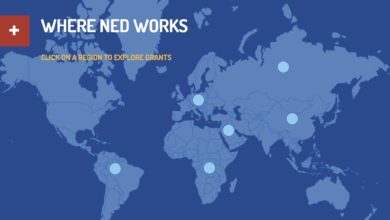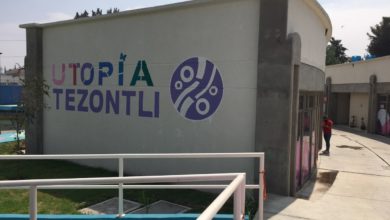Elections under capitalism do not lead to fundamental change. But sometimes, as in the case of Mexico today, they can unleash the popular forces that are capable of carrying out fundamental change.
 Workers come out to protest election results, Mexico City, August 10. Photo: Reuters/Daniel Aguilar |
The July 2 Mexican presidential election was a close race between Felipe Calderón of the pro-U.S. National Action Party (PAN) and Andrés Manuel López Obrador of the social-democratic Democratic Revolutionary Party (PRD). Calderón claimed victory in the elections, but by less than 1 percent of the total votes cast.
López Obrador charged fraud and demanded a full recount of all 41 million ballots cast. Since then, millions have come out to protest the Mexican government’s refusal to carry out a full recount.
Under pressure, the country’s Federal Electoral Tribunal did order a partial recount at 9 percent of the polling places. The president is to be officially named on Sept. 6.
Typical of the mobilizations in support of López Obrador’s demands for a recount, a gigantic march and rally on July 30 brought an estimated 2.5 million people into the streets of Mexico’s capital. It was the third in a series of what became weekly demonstrations, an immense show of force on the part of the mass movement.
The movement that has emerged in Mexico to respect the vote of millions of people now could move beyond the confines of a struggle for democratic rights. It has taken on an increasingly sharp class character, with the poor and disempowered workers rallying around López Obrador. His candidacy embodies their hopes of ending declining standards of living and grinding poverty—in a country where at least half the population lives at or beneath the poverty line.
“We are here to say no to electoral fraud,” 64-year-old María Sánchez told the Aug. 13 Associated Press. “They have to respect the will of the people. It is not fair that the rich keep getting richer and the poor keep getting poorer.”
Not that López Obrador is a revolutionary; on the contrary, the PRD is not an anti-capitalist party. It seeks to preside over a kinder, gentler capitalism with some concessions to the country’s poorest people. López Obrador does not call for repealing the hated NAFTA free trade treaty, although he has asked to renegotiate several of the worst aspects for Mexican farmers.
But the outpouring of anger over the election’s outcome has put a new dynamic in the usual electoral campaigns of false promises and populist rhetoric. Millions of Mexican poor and working people have taken to the streets and are feeling their strength.
Already, the days when Mexican politics would be decided behind the backs of the masses—first by the Institutional Revolutionary Party (PRI) and now by the PAN—have been shattered. Now, class demands have entered the decades-old democratic battle against the corrupt and fraudulent abuse of institutionalized power.
As much as López Obrador and the PRD want to blame the ills of society on a lack of democracy, it is capitalism and the recent neoliberal policies that are clearly to blame for the disenfranchisement of Mexico’s masses. This reality is clear to millions of those who are in the streets pushing for a López Obrador victory.
In fact, past electoral reforms have just given the ruling elite more room to maneuver. By seeking to the keep struggle within confines acceptable to capital, past electoral and democratic reforms have been able to effect only minimal change.
Class struggles across Mexico
The demonstrations of millions in Mexico City’s Zócalo, or main square, have become a focus for the mass discontent that has been bubbling under the surface of the country’s political status quo for the last decade. Around the country, sharp class struggles are taking place outside the safer bounds of electoral contests. Many of these recent struggles explicitly aim at the policies that led to the implementation of neoliberalism and NAFTA.
For example, steelworkers took over the SICARSTA steel plant in the Pacific coastal town of Lázaro Cárdenas, Michoacan in April, staging an 18-day strike against weakened job security and government interference in the union. On April 20, over 1,000 cops attacked the strike, killing two union workers and injuring scores of others.
Just a few weeks later, on May 4, street battles broke out in San Salvador Atenco, 20 miles north of Mexico City, when flower vendors refused to make way for a planned WalMart store. The police attack had the approval of town mayor Nazario Gutiérrez—a member of the PRD.
In another major workers’ struggle, a teachers’ protest in Oaxaca for more educational resources opened up on May 23. Over 70,000 teachers participated. On June 17, over 1,700 cops attacked the strikers and their families. Since that police attack, hundreds of thousands of supporters from across the state have joined protests against the government’s brutal, repressive response.
Since then, unions, Marxist parties, Indigenous groups and other working-class organizations have led a militant struggle to force the state’s governor to resign. They formed the People’s Assembly of Oaxaca (APPO) in June. Despite the lack of institutional support, the APPO has advanced the struggle in Oaxaca, while becoming increasingly independent of the established capitalist political parties.
While much of the old PRI-affiliated political apparatus was replaced after the July 2 national elections by PRD representatives, the social democrats have not yet been supportive of the people’s movement.
 Workers in San Salvador Atenco stand up to government repression. Toluca, Mexico, June 2. Photo: Notimex/F. Contreras/FRE/WAR |
In addition to these struggles, there are continuing struggles of Indigenous Mexicans for their rights and for recognition. For example, Indigenous peasants in the state of Guerrero have been fighting for over three years against a government plan to drive them off their lands to make way for the La Parota Dam. Their struggle—in the face of assassinations and threats—has generated national solidarity.
Throughout the election campaign, the Zapatista’s “Other Campaign” (La Otra Campaña) tried to highlight the different struggles taking place around the country, like in Guerrero and in San Salvador Atenco. Their perspective was that whichever candidate won the election, struggles were ahead.
“Vote or don’t vote, just get organized,” Subcommander Marcos told the Mexican daily La Jornada on July 7. “You can anticipate that whoever wins, the [political] legitimacy is in crisis.”
“La Otra” had the important role of raising issues that none of the candidates addressed from the perspective of the country’s working people, like NAFTA, the ill effects of neoliberalism and the fight for Indigenous rights.
The stakes are rising
While U.S. imperialism tolerates social-democratic governments like Lula’s in Brazil or Kirchner’s in Argentina, the stakes are higher for a social-democratic candidate like López Obrador winning in Mexico. Since the 1980s, the Mexican economy has been closely tied to the U.S. economy. It serves as a dumping ground for excess U.S. goods and as a supplier for cheap labor within Mexico at countless maquiladoras.
For this reason, the U.S. government is increasingly intolerant of López Obrador’s presidential aspirations.
López Obrador and the PRD are also in a crisis. They have sought to portray themselves as responsible servants of capitalist rule in Mexico. But the aspirations of the millions who are taking to the streets increasingly put a wedge between the PRD and the respectability it craves as a loyal opposition.
After the results of the partial recount were announced, López Obrador talked tough. “We will not accept an illegitimate government and a counterfeit president,” he told tens of thousands in the Zócalo on Aug. 13.
López Obrador’s supporters have outlined a new campaign of civil resistance. They have occupied central Mexico City’s streets for weeks, and are pledging to keep up the protests. They are planning another march on Congress on Sept. 1, more actions on Sept. 6 when the electoral tribunal announces its decision and massive protests for the Sept. 16 independence day celebrations.
Following the Sept. 16 protest, supporters will announce a campaign of civil disobedience that will “imply a position of rebellion against authorities,” a López Obrador aide told the Associated Press on Aug. 17. The aide ruled out an “armed insurgency,” however.
A period of political unrest could provide an opening for the social and workers’ movements in Mexico to push forward a campaign against NAFTA and Washington’s imperial dictates.
López Obrador himself is still careful to keep the protests within the bounds of legality. Working-class militants will undoubtedly be wary of his ability to channel the movement into safe, pacifist or class-collaborationist channels.
But each new demonstration and each new protest reveals the increasing class tensions in Mexico. Revolt is everyday more inevitable.





